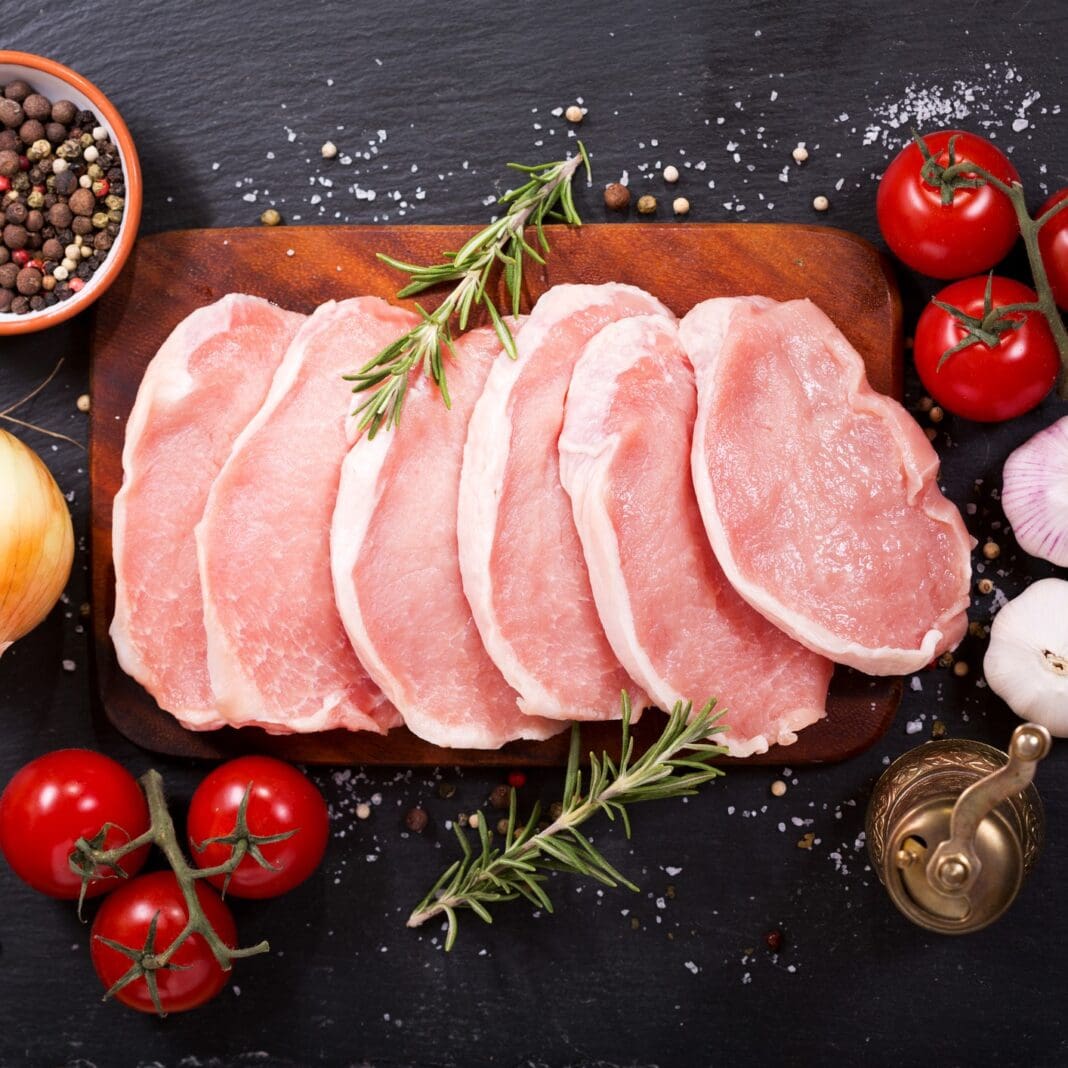Pork, one of the most widely consumed meats globally, has long been surrounded by misconceptions and myths. These false facts range from nutritional content to preparation methods, often leading to misunderstandings about this versatile meat. Let’s slice through these myths and uncover the truths about pork.
1. Myth: Pork is a White Meat
It’s a common belief that pork falls under the category of white meat. However, scientifically, pork is classified as red meat. This categorization is based on the myoglobin content in the muscle, which is higher in pork than in poultry, placing it firmly in the red meat category.
The confusion likely stems from pork’s lighter color compared to beef or lamb. Additionally, a marketing campaign from the pork industry in the 1980s labeled pork as ‘the other white meat’ to promote it as a healthier alternative, which further perpetuated this myth.
Understanding pork’s true classification helps in making informed dietary choices, especially considering the different nutritional profiles and cooking methods between red and white meats.
2. Myth: All Pork is High in Fat
Many people believe that pork is inherently high in fat, but this is not entirely true. According to nutritional data, cuts like pork tenderloin are comparable to skinless chicken breast in terms of fat content. The fat content in pork varies significantly depending on the cut.
Lean cuts of pork, such as tenderloin, loin chops, and sirloin roast, contain less fat than some cuts of beef and chicken. The method of preparation also plays a significant role in the fat content of the final dish.
It’s essential to understand that like any other meat, pork comes in various cuts, each with its unique nutritional profile. Thus, generalizing all pork as high in fat is misleading and overlooks the versatility and options available within this meat category.
3. Myth: Pork Fat is Particularly Unhealthy
Another widespread belief is that pork fat is especially unhealthy compared to other animal fats. While it’s true that excessive consumption of any animal fat can be unhealthy, pork fat contains a higher proportion of unsaturated fats, which are considered healthier than saturated fats.
Pork fat also provides essential vitamins and minerals, making it a valuable component of a balanced diet when consumed in moderation. The nutritional value of pork fat can vary based on the diet and breed of the pig, as well as the cut of meat.
It’s crucial to strike a balance in consumption and understand that in moderation, pork fat can be part of a healthy diet, especially when it comes from high-quality sources and is prepared in a health-conscious manner.
4. Myth: Bacon Causes Cancer
The claim that bacon causes cancer has created a significant stir. While it’s true that the World Health Organization has classified processed meats, including bacon, as carcinogenic, this doesn’t mean that eating bacon will inevitably cause cancer.
The risk is associated with high consumption levels. Consuming these meats in moderation, as part of a varied and balanced diet, significantly mitigates the risk. It’s the quantity and frequency of consumption that are key factors in the potential health risks.
Bacon can still be enjoyed as a treat rather than a staple, and there are also many methods to prepare bacon that can reduce potential health risks, such as baking instead of frying.
5. Myth: Nitrite-Free Processed Pork is Healthier
Many believe that nitrite-free processed pork products are healthier. However, these products often contain naturally occurring nitrites from vegetable sources like celery juice. These natural nitrites function similarly to synthetic ones in terms of preserving the meat and affecting health.
The key to healthy eating is not about avoiding nitrites entirely but understanding that moderation and variety in one’s diet are essential. Whether nitrites are synthetic or natural, the quantity consumed is the critical factor in determining health impacts.
This misconception underscores the importance of reading labels carefully and understanding what goes into processed meats, regardless of whether they are marketed as ‘nitrite-free’ or not.
6. Myth: Nearly All Pork is Produced on Factory Farms
A common perception is that almost all pork is produced in factory farms. However, this is not entirely accurate. While large-scale farming does contribute significantly to pork production, there are also many small-scale, sustainable farms that produce high-quality pork.
These smaller farms often focus on ethical and environmentally friendly practices, including free-range and organic farming methods. The pork from these farms can differ significantly in taste and quality from mass-produced pork.
Understanding the source of pork is essential for making informed choices about the meat you consume, both from an ethical standpoint and in terms of quality and taste.
7. Myth: Pork is Inherently Salty
Many associate pork with a salty taste, but this characteristic is not inherent to the meat itself. It’s the processing methods used in products like sausages, bacon, and ham that add significant salt content.
Fresh pork cuts, such as chops and tenderloin, contain natural levels of sodium, much like any other meat. The high salt content in certain pork products is a result of preservation and flavoring techniques, not an inherent quality of the meat.
Understanding the difference between processed and fresh pork is key to managing sodium intake while enjoying this versatile and flavorful meat.
In conclusion, debunking these myths about pork allows us to appreciate the meat’s versatility and nutritional value more fully. By understanding the facts, we can enjoy pork in a balanced, informed, and delicious way. So, next time you hear a pork myth, remember to take it with a pinch of salt – or perhaps, a slice of tenderloin.

